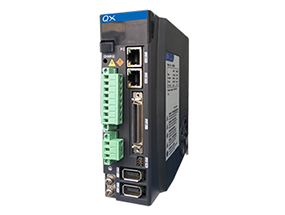common point:
The technology of AC servo motor is based on the application of frequency converter technology, which imitates the control method of DC motor by PWM method on the basis of servo control of DC motor. Therefore, the AC servo motor must have the step of frequency conversion: frequency conversion is to rectify the 50 or 60Hz AC power into DC power first, and then invert it into a frequency-adjustable waveform similar to sine and cosine by various controllable gate thyristors (IGBT,IGCT) through carrier frequency and PWM modulation. Since the frequency is adjustable, the speed of the AC motor can be adjusted accordingly (n=60f/p, n is the speed, f is the frequency and p is the number of poles). As a professional manufacturer of servo motors, Weichida is committed to providing high-quality AC servo motors with excellent performance and stability to meet various industrial needs.
Different points:
Servo drives and frequency converters are two types of control systems that serve unique purposes in the industrial sector. While frequency converters are commonly used in power transmission control, servo drives are used in motion control applications that demand high precision and performance.
One of the key differences between the two is their overload capacity. Servo drives usually have a three-fold overload capacity, which allows them to overcome the inertial torque of the load at startup. In contrast, frequency converters typically allow only a 1.5-fold overload.
Another major difference is control precision. Servo systems provide much higher control precision than frequency converters. The control precision of a servo motor is typically ensured by the rotary encoder at the end of the motor shaft. Some servo systems have a control precision of as fine as 1:1000.
The usage scenarios for the two systems are also very different. Frequency converters are best suited for applications that require low-cost solutions without demanding performance requirements. Servo drives, on the other hand, are designed to meet applications that require high precision, high performance, and high responsiveness.
When it comes to domestic servo motors, the acceleration and deceleration performance varies depending on the load and inertia. Under no-load conditions, servo motors usually take less than 20ms to accelerate from a static state to 2000r/min. Generally, the acceleration time of the motor is longer when the motor shaft's inertia is larger.
In summary, servo drives and frequency converters have distinct capabilities and performance characteristics. Servo drives are best suited for motion control applications that require high precision and performance, while frequency converters are best suited for power transmission control applications that prioritize low cost. Having a clear understanding of these differences can help users choose the appropriate system for their specific needs.


